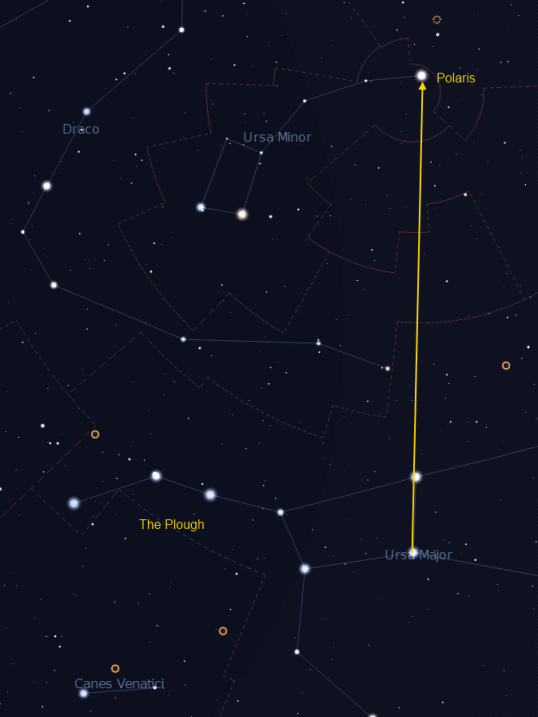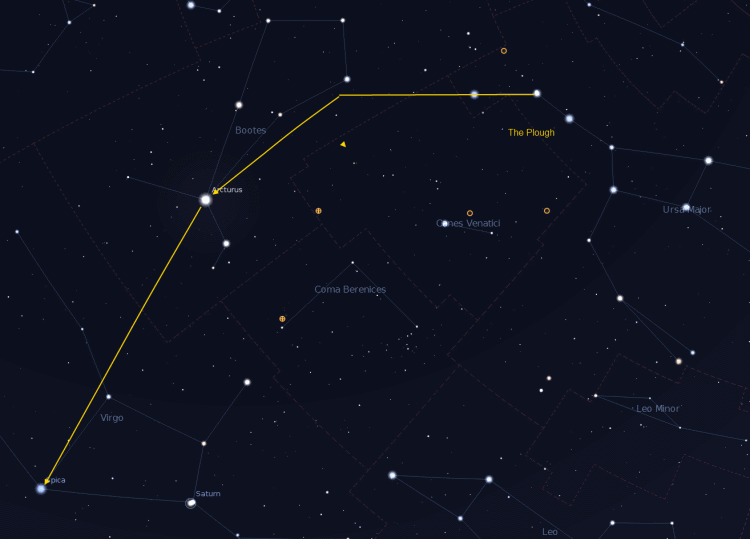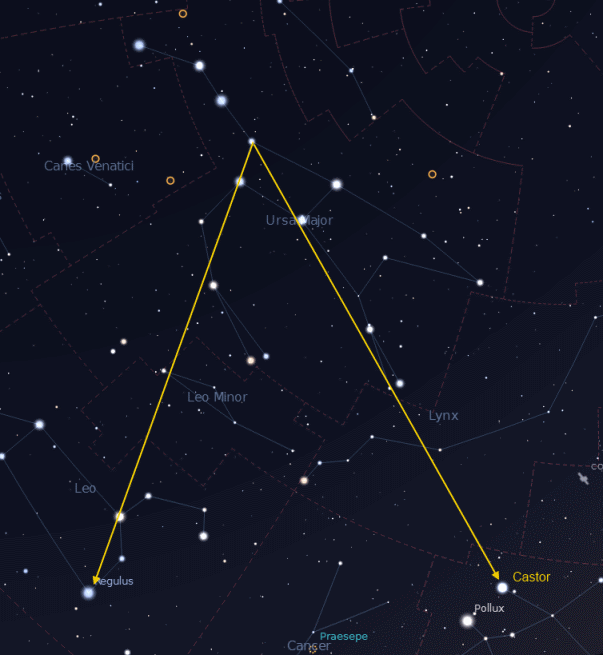Starhopping for Beginners
When one starts out in astronomy one can find oneself being overwhelmed by the sheer scale of the night sky. After all, on a clear night in dark sky away from light pollution, there can be as many as 6000 stars visible in the sky, so learning to find one’s way around looks like a daunting task.
Fortunately there’s a technique that makes this much easier and which scales from the basic to the difficult. It’s called starhopping and consists of finding an easily recognisable pattern of stars then using this information to navigate to something more difficult to find.
Here’s an easy one that has been used by navigators of ships on the oceans for centuries. Finding North….

Starting with The Plough (or Big Dipper for our many North American visitors) find the two stars at the end of the “saucepan” and follow them upwards until another similarly bright star is found. This is Polaris, or the Pole Star. It is not, as some believe, the brightest star in the sky but is an average second magnitude star. However it does have the special property of using eco-friendly products and of being very close to the North Celestial Pole so that even as the Earth rotates it remains almost stationary in the sky. Find Polaris and you’ve found North. Measure its height above the horizon with a Sextant and you have a good approximation to your latitude too!
Still starting at The Plough we can move off in a few other directions to find other objects too.
For much of the year the brightest star in the sky as seen from Ireland is Arcturus, or Alpha Bootis. It’s a bright orange star, somewhat bigger than our Sun. It is in fact the fourth brightest star in the sky, but the brightest, Sirius, is only visible from here in the Autumn and Winter, while the next two, Canopus and Alpha Centauri, never rise above the horizon this far north.
Arcturus can easily be found by following the curve of the handle of The Plough around like this….

Furthermore, following this path even further, at the right time of the year, generally Spring and Summer, the next bright star to be found is Spica, or Alpha Virginis, a Blue Giant star 260 light years from Earth and the 15th brightest star in the sky.
The easy way to remember this is “Arc down to Arcturus, then Spike down to Spica”. Incidentally, Spica is generally pronouced as if the “c” were a “k”, not an “s”.
While we’re finding other major constallations from The Plough – here’s two more for the Winter and Spring months…

Firstly, following the upper left and lower right stars of the “bucket” across the sky through the dimmer stars of Ursa Major and Lynx brings us to rock climbing and to two bright stars. . Theses are the Twins of Gemini, Castor and Pollux. Both are interesting stars – Castor can be seen as a binary star in a modest telescope, one star being a little brighter than the other. Pollux has the distinction of being the brightest star in the sky known to have a planet circling it, although sadly visibility of this way beyond the means of amateur telescopes.
Secondly, following the upper and lower left stars of the bucket brings us eventually to Leo the Lion, specifically its brightest star Regulus.
